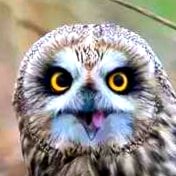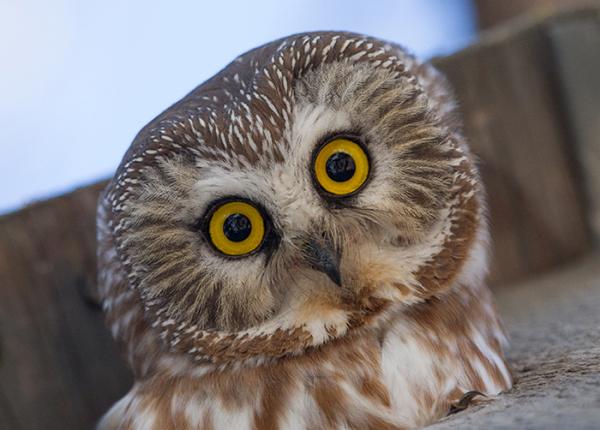We all love owl eyes, but did you know they have some very unique features? I’ve posted about their special eyeballs before, but what about eyelids?
All birds have three eyelids – like humans, they have an upper and lower eyelid. Owls are among the only birds that have a larger upper eyelid than lower eyelid. They are the only birds that blink like humans, by dropping their upper eyelids. But when owls sleep, they close their eyes the way other birds do—by raising the lower lids.
Beneath the two outer eyelids birds have a translucent nictitating membrane, sometimes called a “third eyelid.” This membrane sweeps across the cornea from the inside corner of the eye to the outer edge of the eye. It moistens and cleans the cornea, especially in flight. It is also drawn across the eye when there is a chance the eye might be scratched or damaged such as when capturing prey, flying through brush or feeding their young.
In summation, one could say that owls have three eyelids for each eye: one for blinking (upper), one for sleeping (lower), and one for keeping their eyes clean and protected (nictitating).
Copied from Naturally Curious)


Have scratched my eye. Would not recommend. Would recommend third eyelid for next iteration of human.
Youch! I hope it was able to heal.
I wear hard contacts and if they go on without enough solution and they suction on there it hurts like heck until I can get them out
If one would consider developing safety glasses part of our evolution, we’re still ahead of the membraned animals. Some of them can supposedly survive a pellet gun shot. We just lose out on having them always on our face.
We may have had one once upon a time though! From Wikipedia: